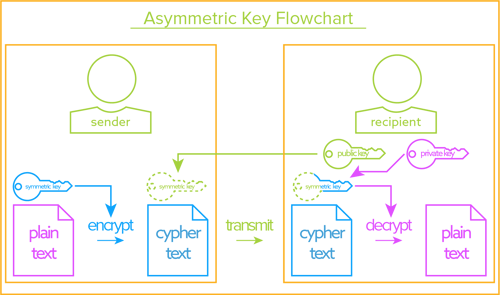How Does Your Organization Currently Generate Encryption Keys
- How Does Your Organization Currently Generate Encryption Keys Free
- How Does Your Organization Currently Generate Encryption Keys Work
Sep 30, 2014 The key is created using the crypto module of the encryption engine. The key is then provided to a key vault and to various other encryption engines. This key is utilized for encrypting and decrypting data. The key is then suspended, terminated or destroyed. @MichaelAaronSafyan: i have to do some encryption/decryption through java class. I want the key generation to happen only once and it should be done manually using UNIX command.I will read this secret key from file in java class and perform encryption/decryption. – user3244519 Feb 18 '14 at 11:40.
- Apr 09, 2020 Local SSDs are already protected with an ephemeral encryption key that Google does not retain. Compute Engine does not store encryption keys with instance templates, so you need to store your own keys in KMS to encrypt disks in a managed instance group. Required key format. It is up to you to generate and manage your key.
- If you only need to encrypt a few folders on a network share, rather than the whole file system, Vormetric may be your ideal candidate. If you want to implement a key management solution that covers more than just storage encryption keys, nCipher is the strongest candidate. Click here to continue reading How to manage encryption keys, page 2.
The Encrypting File System (EFS) is the built-in encryption tool in Windows, it can be used to encrypt your file, folders and even drives to help keep your data secure and prevent other user accounts from being able to gain access to it. This is a guide on how to back up encryption certificate and key in Windows 10.
Creating a backup of your file encryption certificate and key can help you avoid permanently losing access to your encrypted files and folders if the original certificate and key are lost or corrupted.
The first of these is IP forwarding, a method for determining where IP traffic should be routed. This is essential to the VPN functionality that your server will provide.Adjust your server’s default IP forwarding setting by modifying the /etc/sysctl.conf file:. Auto generate server key openvpn server.
3 methods to back up EFS File Encryption Certificate(s) and Key(s):
Backup Current Encryption Certificate and Key from EFS Notification or Icon
The Encrypt files system feature in Windows locks and encodes your information. After you encrypt files or folders, you will see the EFS notification and icon on the lower right corner of Desktop.
Step 1: Either click on the EFS notification or taskbar icon.
Step 2: Click on Back up now. In certificate wizard window, click on Next.
Step 3: Set a password.
Then check the Password box, enter a password, enter password again to confirm, and click on Next.
How Does Your Organization Currently Generate Encryption Keys Free
Step 4: Save backup file.
Click on the Browse button, navigate to where you want to save the backup to, enter a file name you want for the backup, click on Save, and click on Next.
Step 5: Click on Finish. When the export has successfully finished, click on OK.
How to Backup Encryption Certificate and Key in Certificates Manager
How Does Your Organization Currently Generate Encryption Keys Work
Step 1: Open Certificates Manager.
Press the Win+R keys to open Run dialog, type certmgr.msc, and click OK.
Step 2: In the left pane of certmgr, expand the Personal store, and open Certificates.
Then select all certificates for Encrypting File System, right-click these selected certificates, click on All Tasks and click on Export.
Step 3: To continue, click Next. When it comes to Export Private Key, click Yes, export the private key option.
Step 4: Click Next, then check the Password box, set a password. Click Next.
Step 5: Save the backup file, then you are done the export process.
How to Backup Encryption Certificate and Key in Command Prompt
Use the option, your EFS certificate can be backed up easily and quickly.
Step 1: Open a Command Prompt.
Press Windows logo + X keys, click Command Prompt from the result menu.
Step 2: In the command prompt windows, enter command below, and press Enter.
cipher /x '%UserProfile%DesktopMyEFSCertificates'
Step 3: Click OK to confirm to back up your encryption key and certificate.
Step 4: Type a password to protect the backup file, and retype the password to confirm.
Step 5: When your EFS certificate has been backed up successfully. You can see a MyEFSCertificates.PFX file on your desktop. This is the backup of your current file encryption certificate and key.

Related Articles
- How to Back up BitLocker Recovery Key for Encrypted Drive
- 2 Ways to Restore Encryption Certificate and Key in Windows 10